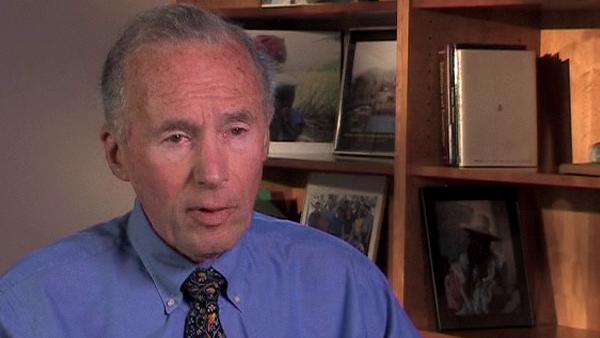NEXT STORY

Setting up the Research Training and Clinical Effectiveness program
RELATED STORIES

NEXT STORY

Setting up the Research Training and Clinical Effectiveness program
RELATED STORIES



We found a legal system that was equally flawed. For every negligent claim... for every negligent injury that led to a claim, there were five claims for which there was no injury. This work was published widely and Axelrod intended to make it the basis for legislation in the state, but shortly after the study was completed, he had a tragic accident that led, shortly afterwards, to his death and his successor chose not to introduce the legislation that the governor had originally sought. So, while we published work widely while there were... while there was a lot of public press, the New York Times had headlines at the time that the material was initially released, and subsequently we published extensively in the New England Journal of Medicine, and in two books, the data really seemed to make no impression until, in 2001... when was, when did that study, the [Quality] Chasm report?
[Q] I think the White House event was 2000.
The [Quality] Chasm report?
[Q] And the White House event was 2000 and Clinton was still in office.
Yeah. It was, it was more than 10 years later that the Institute of Medicine published the [Quality] Chasm report in which they indicated that 100,000 people a year die of injuries incurred in hospitals, that figure having been derived from our study, and that figure led, at that time, to more attention, a great deal more attention. By this time Don Berwick was leading a non-profit organization called the Institute for Healthcare Improvement, and was really exerting an enormous effort on improving quality or helping institutions around the country and around the world improve the quality of their practice. Don, two years ago, using that figure of 100,000, enlisted something over 4000 American hospitals to work with the Institute to save the 100,000 lives that were thought to be the result of injury incurred in hospitals, and the results of that effort have been spectacular.
Born in 1925, American Howard Hiatt set up one of the first medical oncology research and training units in the US and has headed up some of America's most prestigious medical institutions. Hiatt attended Harvard College and received his MD from the Harvard Medical School in 1948. He was a member of the team at the Pasteur Institute, Paris, that first identified and described mRNA, and he was among the first to demonstrate mRNA in mammalian cells. From 1991 to 1997, he was Secretary of the American Academy of Arts and Sciences, where he began and directs the Academy's Initiatives For Children program. He is also committed to helping disadvantaged people access decent health care.
Title: The Quality Chasm report
Listeners: Milton C. Weinstein
Milton C. Weinstein, Ph.D., is the Henry J. Kaiser Professor of Health Policy and Management at the Harvard School of Public Health and Professor of Medicine at the Harvard Medical School. At the Harvard School of Public Health he is Academic Director of the Program in Health Decision Science, and Director of the Program on Economic Evaluation of Medical Technology . He is best known for his research on cost-effectiveness of medical practices and for developing methods of economic evaluation and decision analysis in health care. He is a co-developer of the CEPAC (Cost-Effectiveness of Preventing AIDS Complications) computer simulation model, and has conducted studies on prevention and treatment of HIV infections. He is the co-developer of the Coronary Heart Disease Policy Model, which has been used to evaluate the cost-effectiveness of cardiovascular prevention and treatment. He is an author of four books: Decision Making in Health and Medicine: Integrating Evidence and Values; Cost-Effectiveness in Health and Medicine,the report of the Panel of Cost Effectiveness in Health and Medicine; Clinical Decision Analysis; and Hypertension: A Policy Perspective.He has also published more than 200 papers in peer-reviewed medical, public health, and economics journals. He is an elected member of the Institute of Medicine of the National Academy of Sciences, and a recipient of the Award for Career Achievement from the Society for Medical Decision Making. Dr. Weinstein received his A.B. and A.M. in Applied Mathematics (1970), his M.P.P. (1972), and his Ph.D. in Public Policy (1973) from Harvard University.
Tags: Quality Chasm report, Institute for Healthcare Improvement, Don Berwick
Duration: 3 minutes, 27 seconds
Date story recorded: September 2006
Date story went live: 24 January 2008